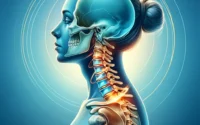Muscle relaxants are a class of medications commonly prescribed to alleviate muscle spasms and associated pain. Understanding their role, administration methods, and common types can provide valuable insights into their effectiveness and safety.
1. When Muscle Relaxers are Prescribed
Muscle relaxants are typically prescribed when patients experience muscle spasms or tightness due to conditions such as back pain, neck pain, or certain musculoskeletal injuries. These medications work by targeting the central nervous system, specifically the brain and spinal cord, to reduce muscle tension and promote relaxation.
2. Factors that Affect the Type of Muscle Relaxer Prescribed
Several factors influence the selection of a specific muscle relaxer for a patient. These include the severity of muscle spasms, the underlying cause of the spasms, the patient’s medical history, and any existing medical conditions or medications. Additionally, considerations such as potential side effects, drug interactions, and the patient’s response to previous treatments play a role in determining the most appropriate muscle relaxant.
3. Types of Prescription Muscle Relaxers
There are several types of muscle relaxants available, each with its own mechanism of action and potential side effects. Commonly prescribed muscle relaxers include benzodiazepines, such as diazepam (Valium) and clonazepam (Klonopin), which act on the central nervous system to induce relaxation and sedation. Another class of muscle relaxants is the centrally acting muscle relaxants, such as cyclobenzaprine (Flexeril) and methocarbamol (Robaxin), which work by targeting nerve pathways to reduce muscle spasms.
4. How Muscle Relaxers May Be Given
Muscle relaxants can be administered through various routes, depending on the medication and the patient’s needs. The most common methods of administration include oral, intramuscular, intravenous, and intrathecal routes.
- Oral administration of muscle relaxers involves taking the medication by mouth, typically in the form of tablets or capsules. This route is convenient and suitable for most patients but may take longer to produce effects compared to other methods.
- Intramuscular (IM) administration of muscle relaxers involves injecting the medication directly into a muscle. This method allows for rapid absorption and onset of action, making it useful for acute muscle spasms or in cases where oral administration is not feasible.
- Intravenous (IV) administration of muscle relaxers delivers the medication directly into the bloodstream through a vein. This route is reserved for severe muscle spasms or in emergency situations where immediate relief is needed.
- Intrathecal (IT) administration of muscle relaxers involves delivering the medication directly into the spinal fluid through a catheter. This method is typically used for severe or chronic muscle spasms that have not responded to other treatments.
5. Common Muscle Relaxers and Their Effects
Each muscle relaxant has unique characteristics and potential side effects. For example, benzodiazepines may cause drowsiness, dizziness, and confusion, while centrally acting muscle relaxants may cause dry mouth, dizziness, and blurred vision. It is essential for patients to be aware of these potential side effects and to discuss any concerns with their healthcare provider.
6. When Muscle Relaxers May Be Prescribed for Back and Neck Pain
Muscle relaxants may be prescribed for patients experiencing acute or chronic back pain or neck pain, particularly when muscle spasms are contributing to their symptoms. These medications can help alleviate pain and improve mobility, allowing patients to participate more effectively in physical therapy or other rehabilitative measures.
7. Safety Profile of Muscle Relaxers
While muscle relaxants can be effective for managing muscle spasms and associated pain, they are not without risks. Common side effects may include drowsiness, dizziness, and impaired coordination, which can affect a patient’s ability to perform tasks such as driving or operating machinery safely. Additionally, some muscle relaxants may have the potential for abuse or dependence, particularly benzodiazepines. Therefore, it is essential for patients to use these medications as directed and to discuss any concerns with their healthcare provider.
Understanding the role of muscle relaxants in pain management, along with their potential benefits and risks, can empower patients to make informed decisions about their treatment options. By working closely with their healthcare providers and adhering to prescribed guidelines, patients can maximize the therapeutic effects of muscle relaxants while minimizing the risk of adverse effects.




